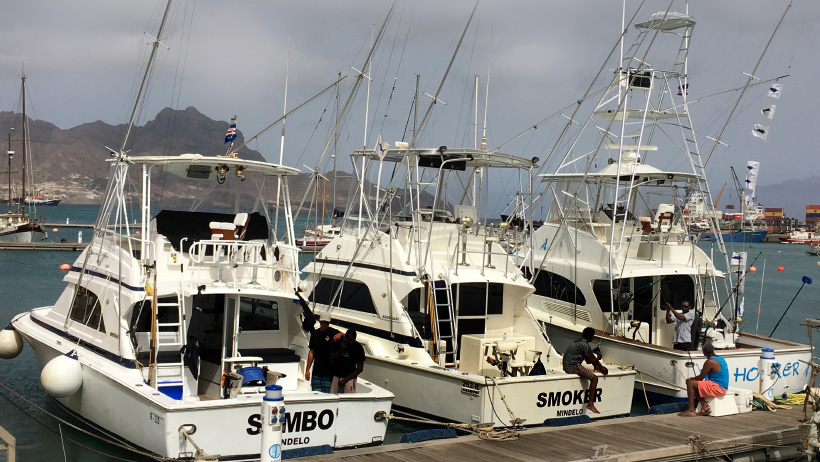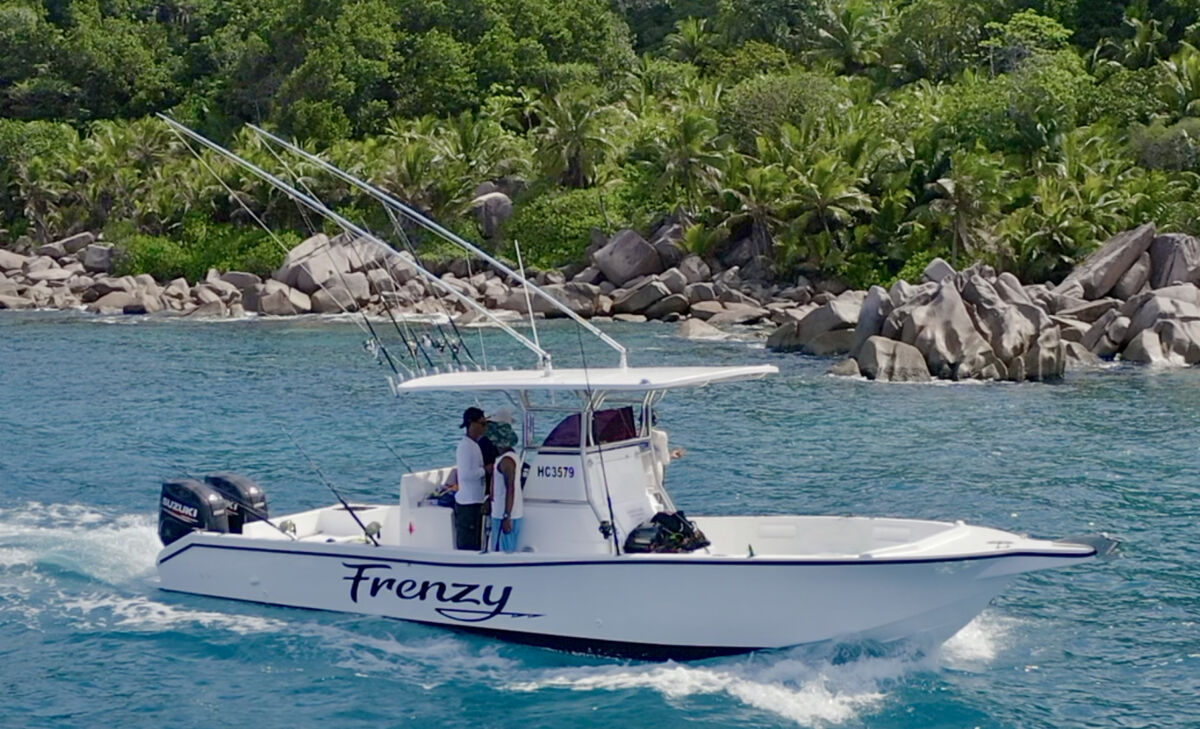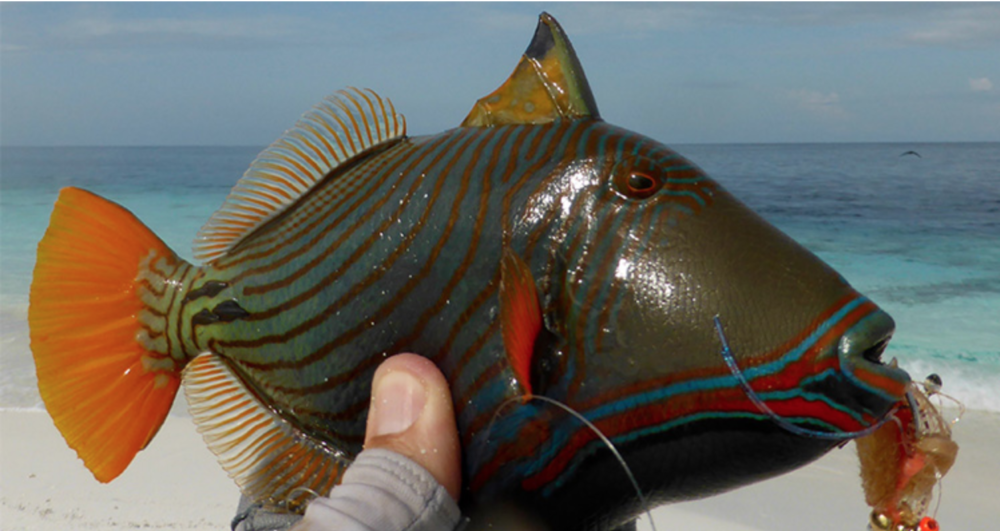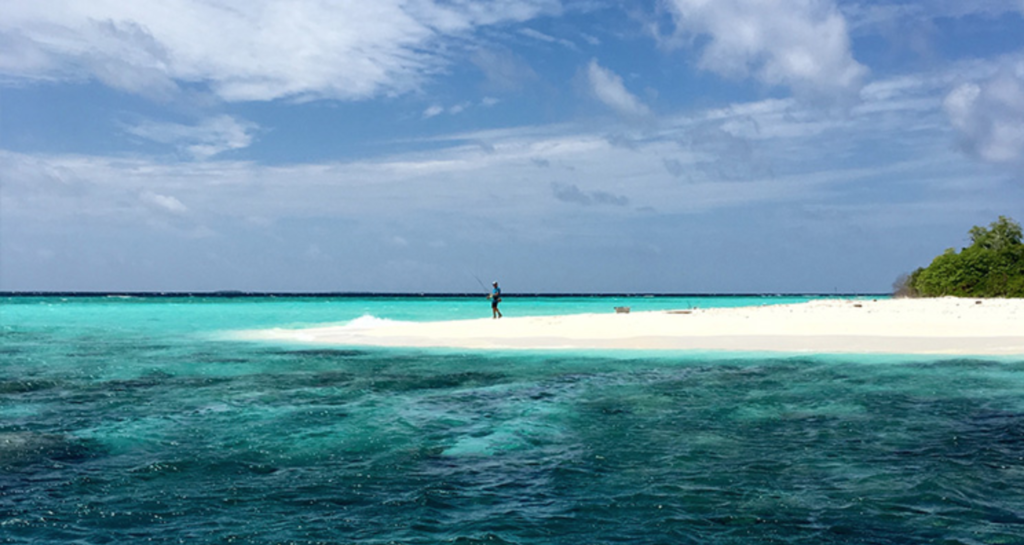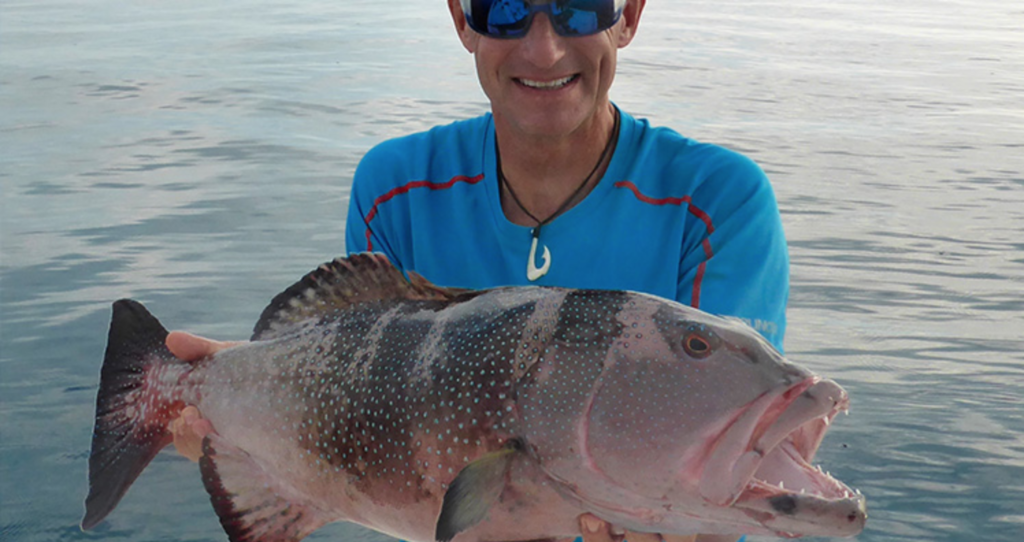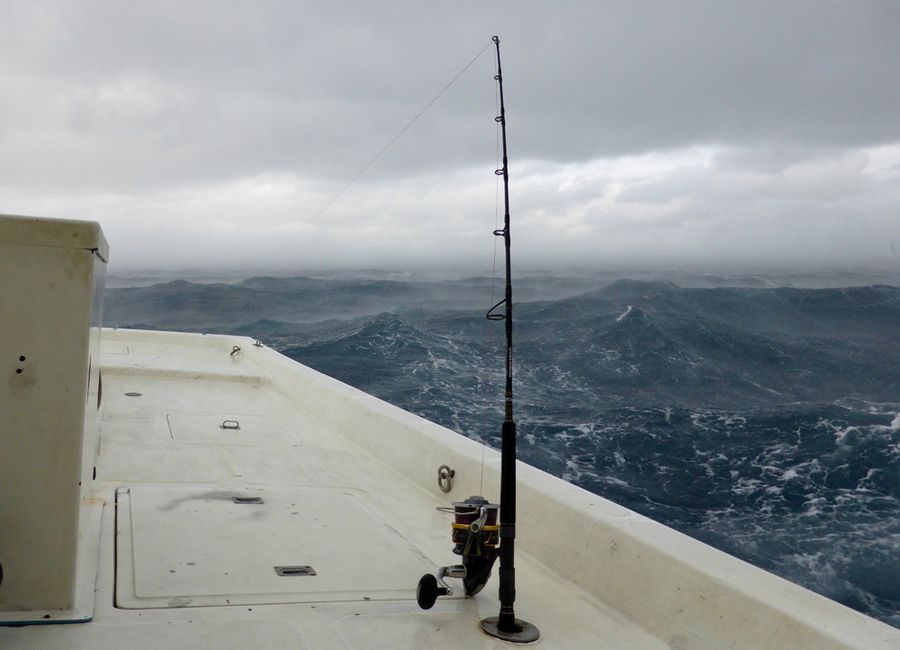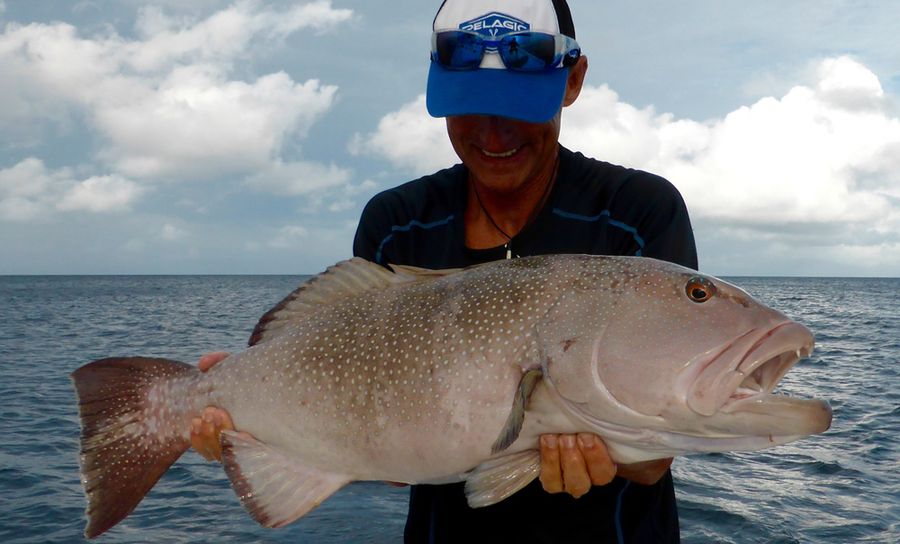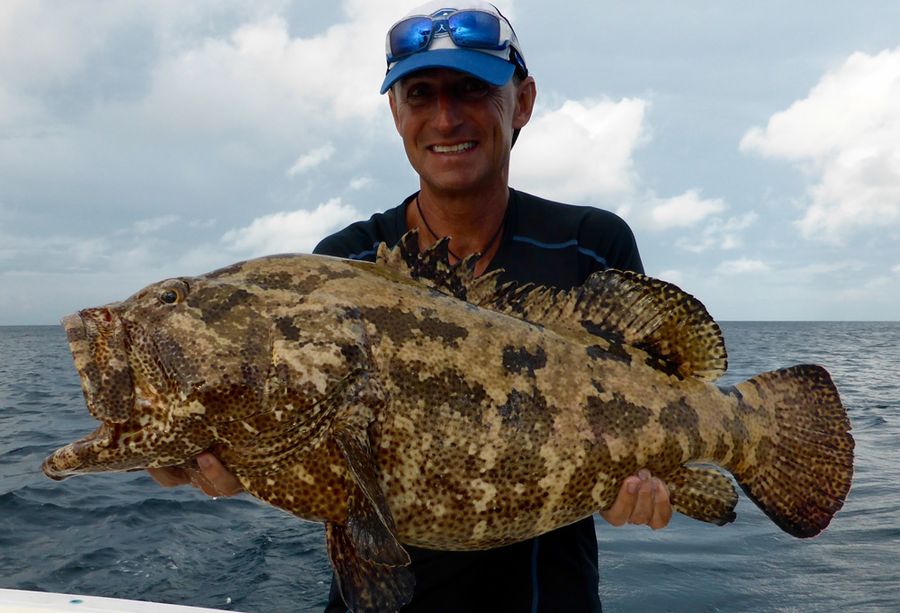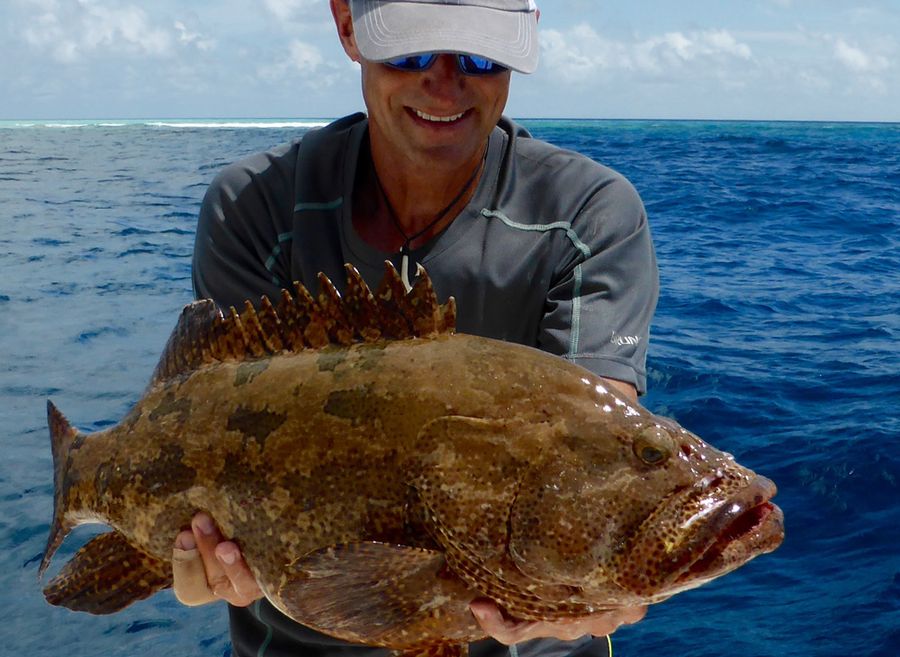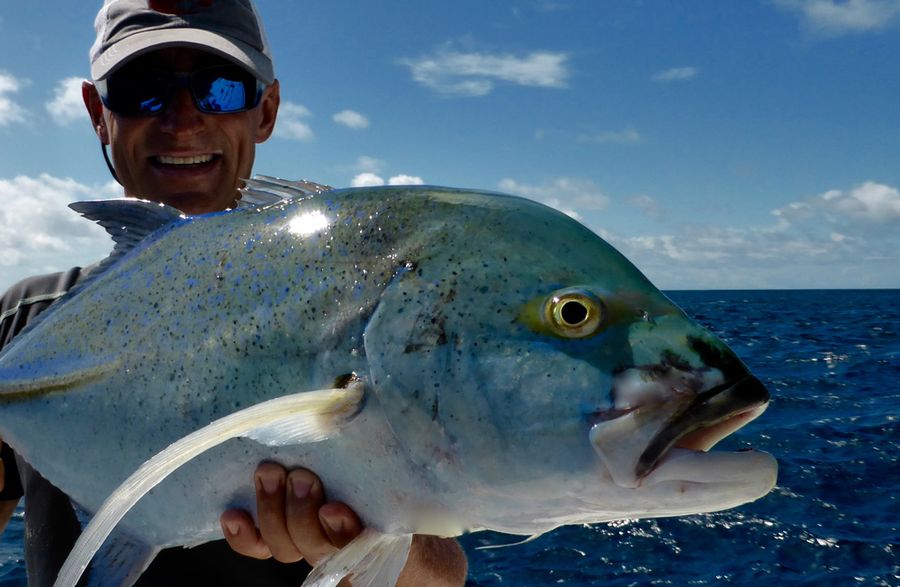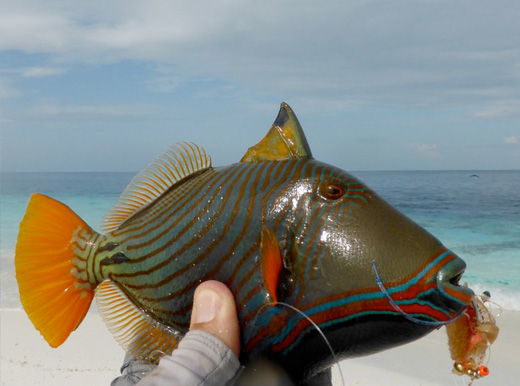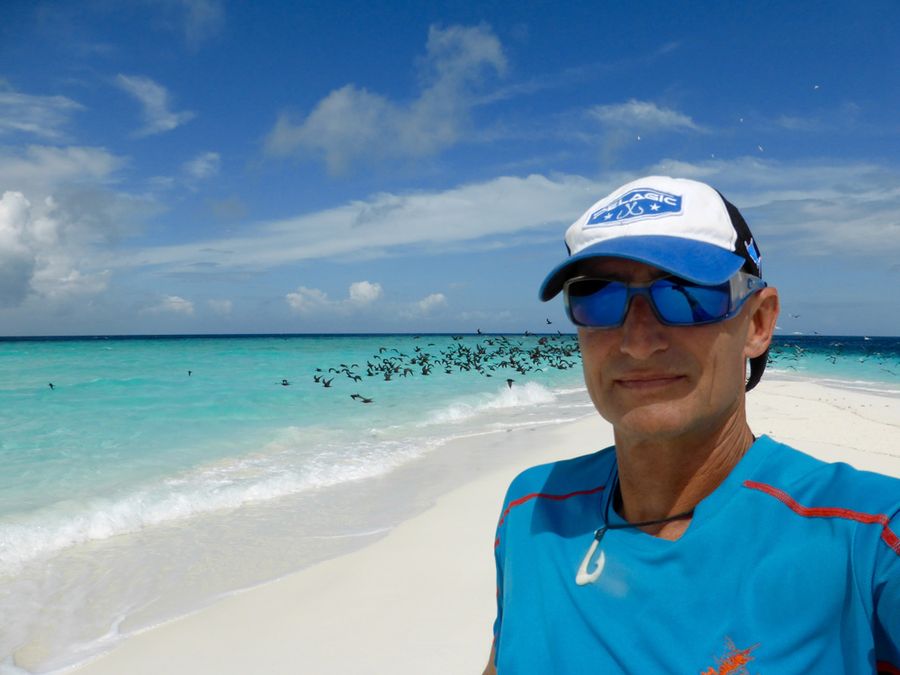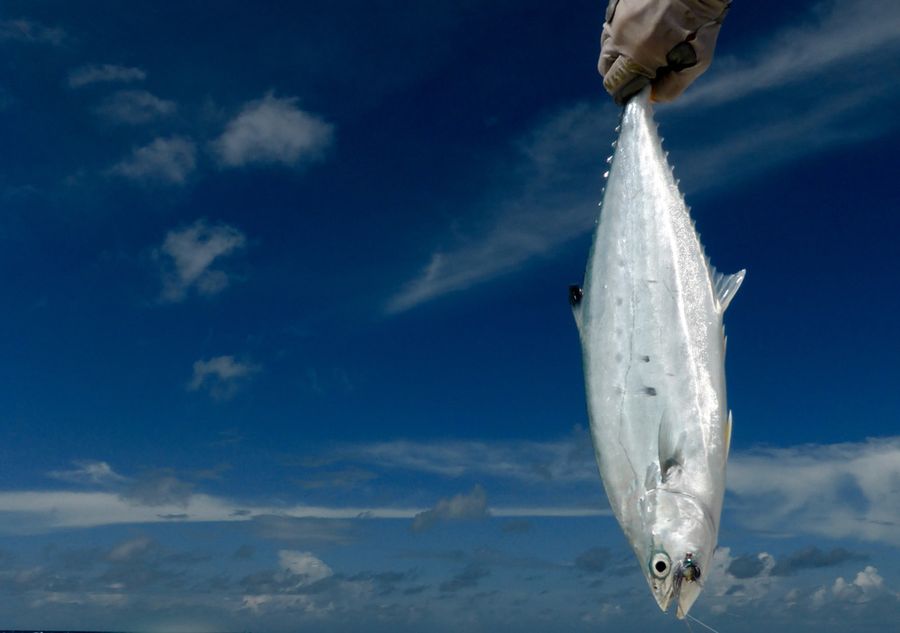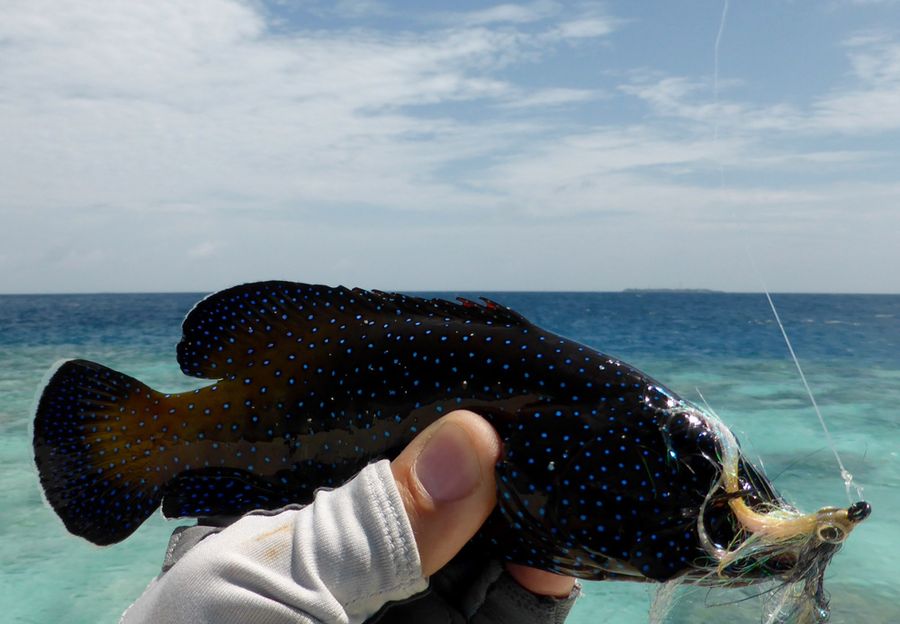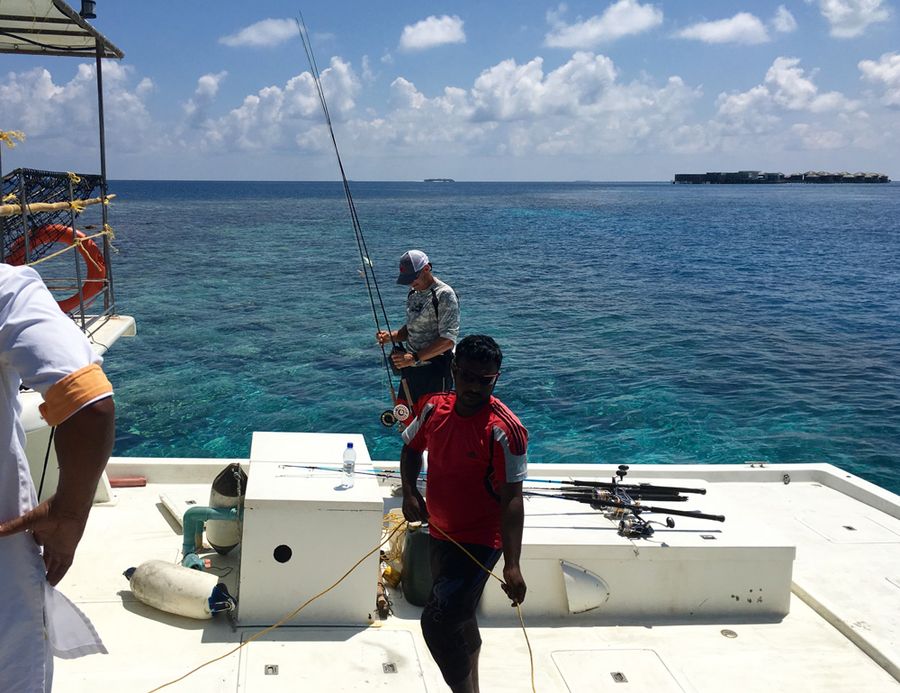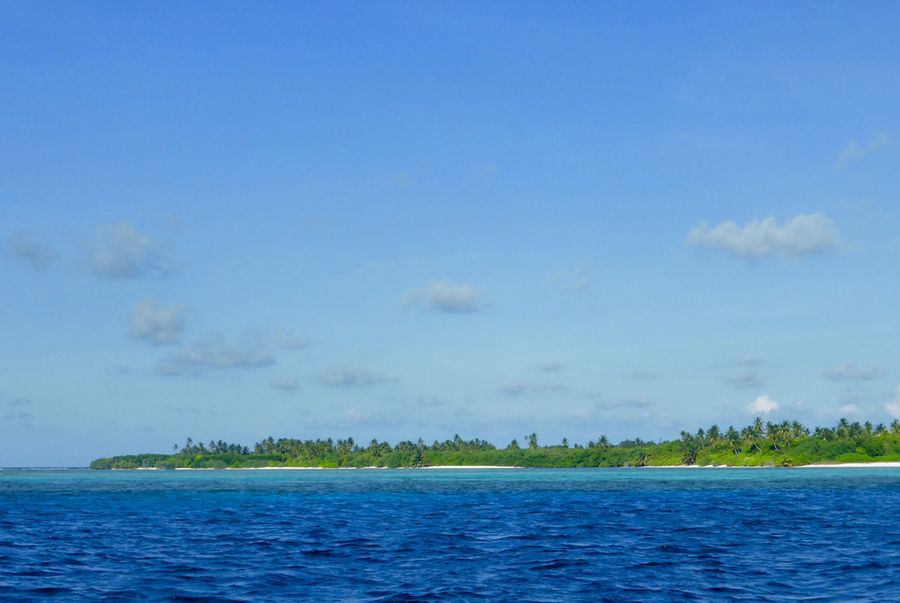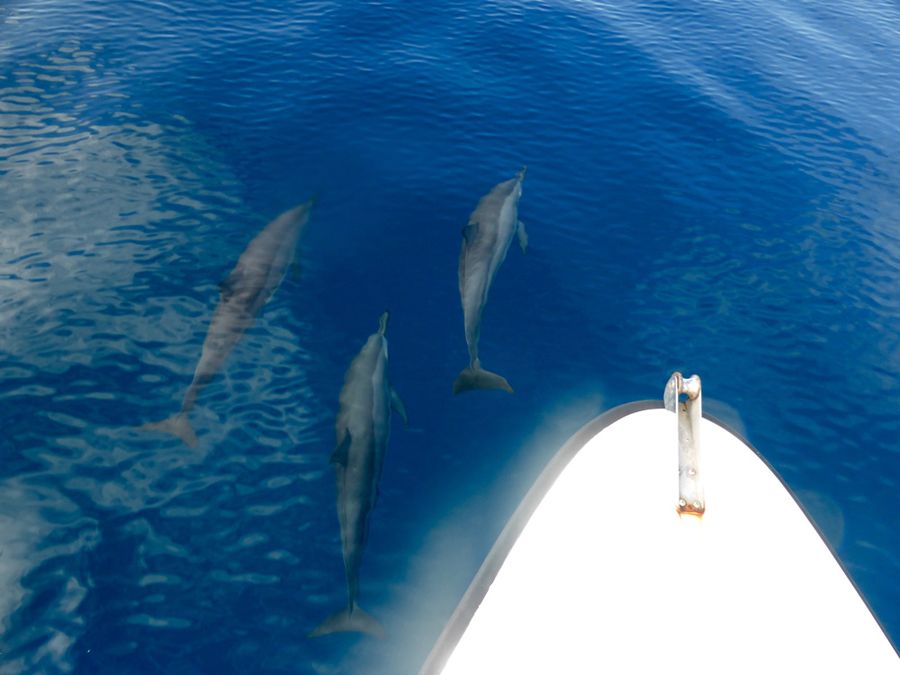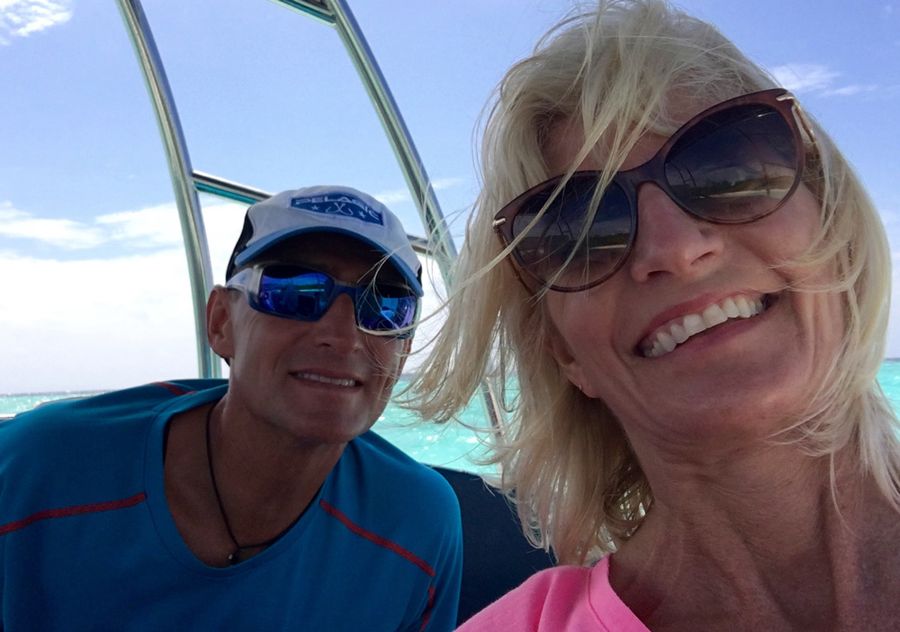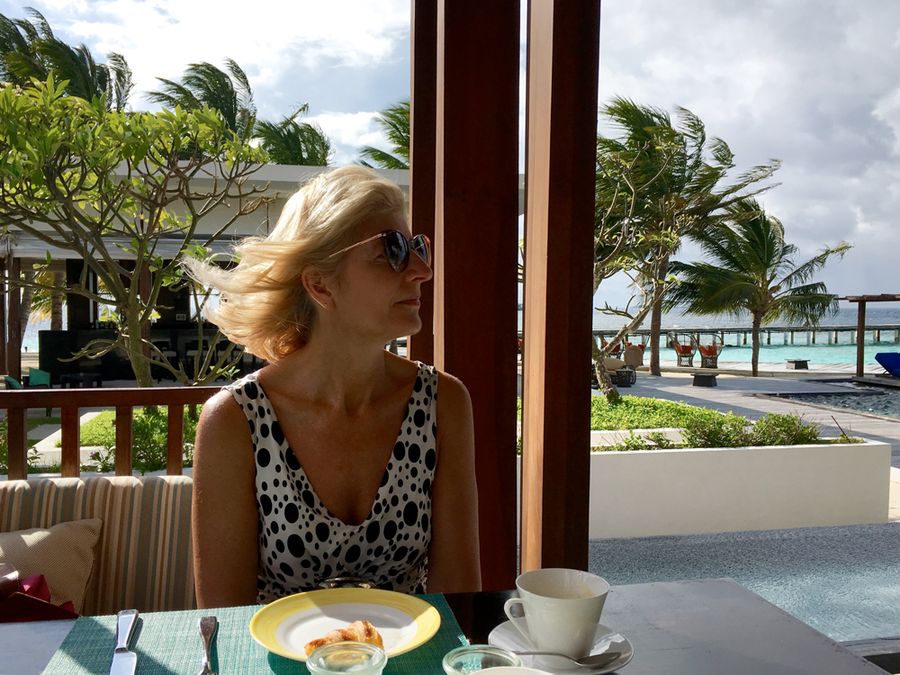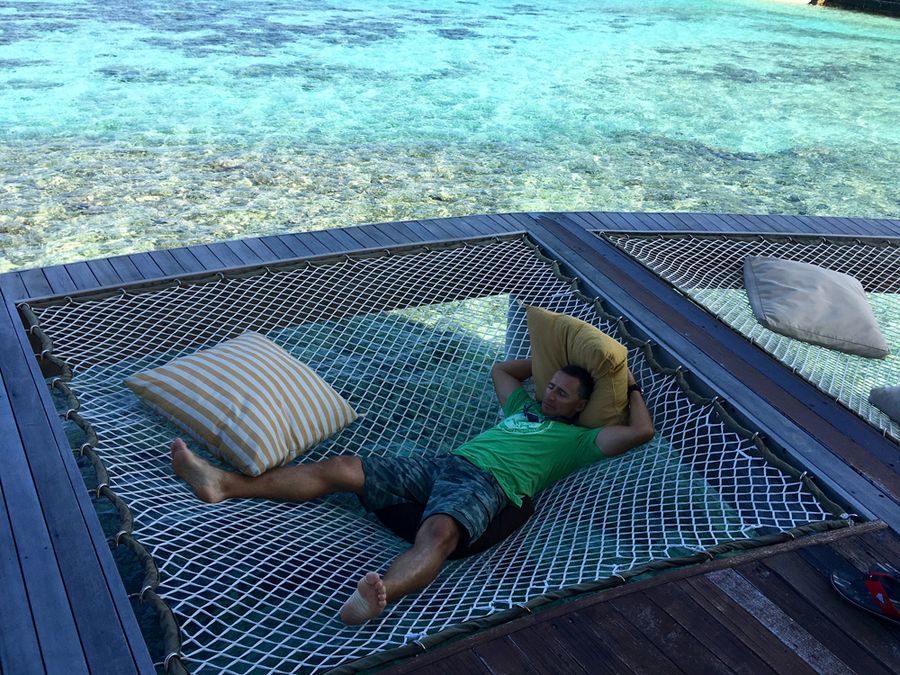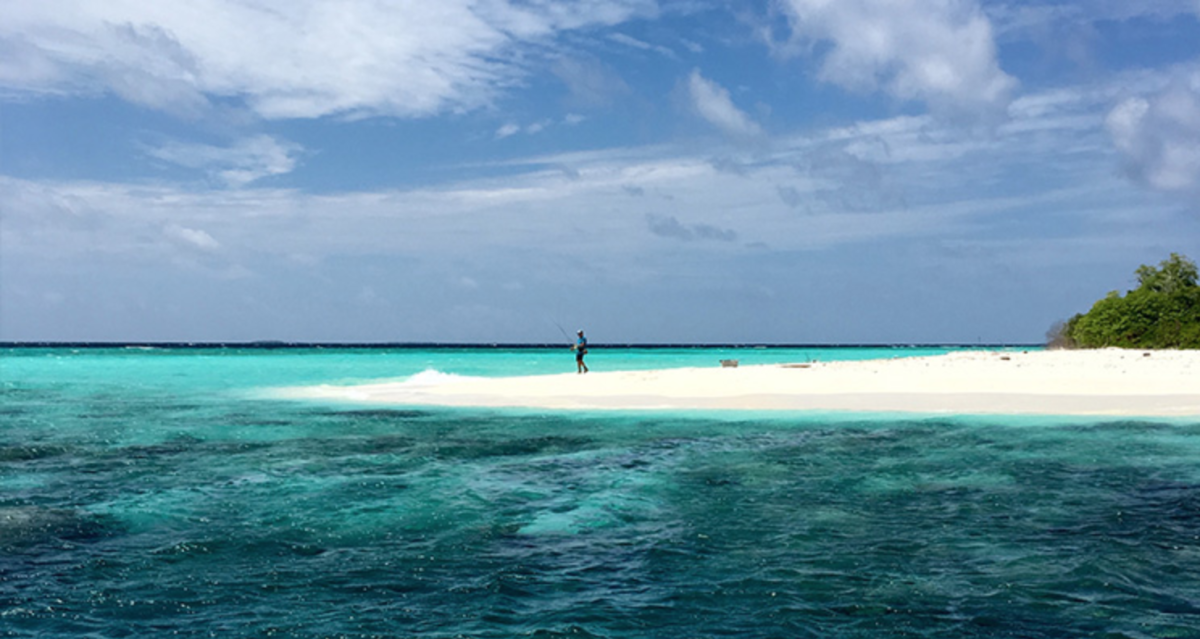The Maldives, December 2016
Monsoon and Coral Bleaching – climate change is taking its toll…
After our strenuous adventure in the Laccadive Islands, I flew directly from India to the Maldives with “Spicejet” airlines, a flight of just under two hours. I met up with my wife Martina who had arrived there a couple of days earlier.
This time we visited the Gaafu Alifu Atoll, close to the equator. The Gaafu Alifu Atoll is also known as the Huvadhoo Atoll and is located in the southern part of the Maldives. Being 70 kilometres long and 55 kilometres wide, this atoll is the largest of the Maldives and this even makes it the biggest known atoll in the world.
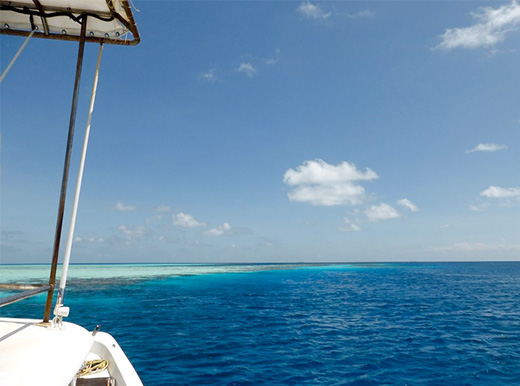
For a change, the main purpose of our week there was dedicated to recuperation and relaxation, although the many channels around the resort positively shouted fish. I quickly organized a boat and set off for some popper fishing and jigging. Unfortunately the weather really threw a spanner in the works – worldwide climate change led to the monsoon rain and storms still being around in December. Higher water temperatures have also left their mark. The house reef with its multitude of corals and fish has been badly affected by coral bleaching.

Unfortunately, we were only able to cast our poppers and stick baits into the almost untouched reefs and channels for three days due to the poor weather – the rest of the week was marred by the monsoon. The results were average for the Maldives. We caught a wide range of reef inhabitants – however, there were no GTs around. According to the divers GTs are extremely rare in this area…
While the storm ripped through the atoll with wind speeds of up to 25 knots, I set off with my fly rod and explored uninhabited islands and sand banks in the hope of catching a bonefish or a GT. By the end of the week I had covered miles and miles without seeing a single bonefish or GT. The number of triggerfish was also much lower than in other Maldivian atolls. I did, however, manage to hook a big one bit unfortunately lost it when my line snapped on the corals. There were plenty of bluefin trevally, queen-fish and miscellaneous smaller reef species around which were quite easy to catch using the smallest of streamers.
The boat did not have any rod holders which made it impossible to troll. We only trolled small lures when moving from one channel to the next and regularly caught yellowfins, wahoos, dorados and rainbow runners. Sailfish were notably absent – we had only two attacks.
Summary:
We have never experienced climate change to such a degree before. The effects were alarmingly visible both above the water line due to the weather and under the surface. At first sight the area looks overwhelming with its clear, turquoise waters and fast running currents in the channels. With every cast you expect to see the GTs fighting each other to get at the poppers – far from it which was something I really couldn’t understand. Even jigging was not particularly productive. It looked as if there were simply no big fish on the west coast of the atoll. The local fishermen said the eastern side was a lot better…
Stephan Kreupl im Dezember 2016
